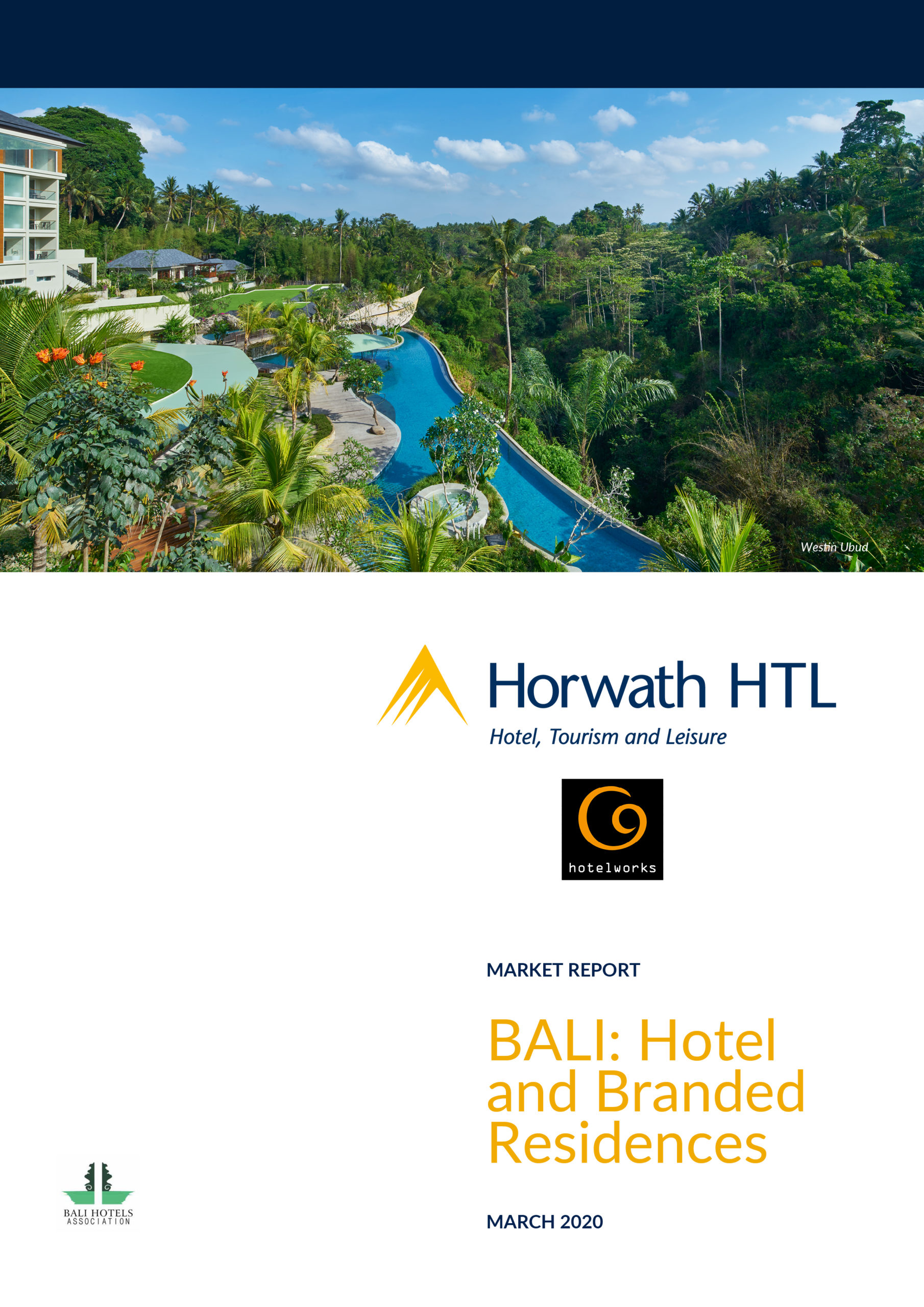Market Report: BALI Hotel & Branded Residences
By Matt Gebbie on March 6, 2020

Is there a canary in the coalmine?
2019 was business as usual (aka difficult) for hotels in Bali. There were no airport closures, nor earthquakes but the market was rocked by a big fall in Chinese arrivals and a duopoly of national airlines charging exorbitant airfares forcing domestic tourists to vacation abroad. All the work done = flat occupancy, flat rates and flat RevPAR across the market in 2019. Hotels in Jimbaran/Uluwatu & Ubud faired best, recording strong RevPAR growth together with luxury hotels which maintained RevPAR YOY.
Due to over tourism and environmental concerns, Bali was included as one of 13 destinations on Travel guide Fodor’s “no go” list in 2020. Bali faces looming ecological challenges such as trash on the beach, traffic jams in main tourist districts, and freshwater scarcity. Without solving these problems, Bali has to rein in its tourism growth.
Bali’s current real estate market unlike other Southeast Asian resort destinations such as Phuket in Thailand is shifting away from hotel branded residences and condotels. The current property market is now seeing development of rental yielding villas and apartments in the high growth areas of Canggu, Brawah and Uluwatu.
Bali Visitor Arrivals
According to BPS forecasts (actual’s not yet available), the number of domestic tourists to Bali would decrease in 2019 to approximately 6.2 million, a six-year record low & down 36.5% YOY.
Nearly 6.3 million international visitors came to Bali in 2019, or about 39% of the 16.1 million foreign visitors to Indonesia (↑2% YOY).
2019 saw growth in arrivals from almost all regions except Asia Pacific (Excl. ASEAN) which fell by 5%. That said, Asia Pacific (Excl. ASEAN) held firm to the No. 1 spot, representing 36% of total international arrivals.
Another important source region was Oceania, generating 22% of total foreign arrivals to Bali in 2019.
In 2019, for the first time since 2016, Australia surpassed China as the top source market for foreign visitors to Bali, generating one-fifth of the total international arrivals. Australians totalled 1,225,425 arrivals, up by 6% from 2018.
Hotel Performance
Bali hotels recorded a slight increase in occupancy but unfortunately a slightly larger decrease in ADR (IDR) in 2019 to record falls in RevPAR (IDR).
Occupancy in the Luxury segment grew positively, while ADR declined by 14% in both IDR and USD, resulting in flat RevPAR.
Upper Upscale class registered the most significant decline of 9% in RevPAR (USD) among all segments, mainly because the ADR slipped, and IDR depreciated against the USD.
The Upscale segment saw declines across the board.
The midscale rate segment also showed a decline in all matrices.